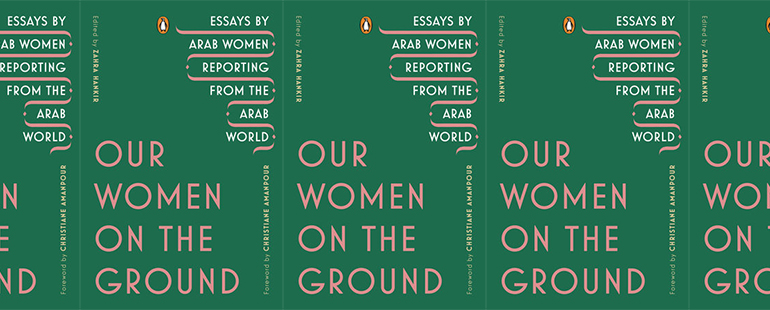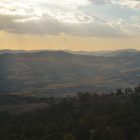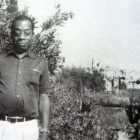The Paradox of Journalistic Objectivity in Our Women on the Ground: Essays by Arab Women Reporting from the Arab World

Our Women on the Ground: Essays by Arab Women Reporting from the Arab World, a 2019 collection of essays edited by Zahra Hankir, presents a powerful rumination on the bravery, guilt, and loss involved in reporting from areas of conflict and war, and what this means for female reporters at the office, in the field, and at home. The journalists come from a variety of backgrounds—some are reporting from their home countries, others grew up in Arab diasporas, and a fair number were raised in Arab countries but cross borders to cover other conflicts. The essays, which range from reflections on the loss of loved ones, delicate relationships with contacts, resisting misogyny, and balancing family responsibilities and safety with the dangers and demands of reporting from areas of conflict and under authoritarian regimes, are embedded with lasting questions and debates about the media’s and journalists’s roles in delivering news: How does international media contribute to the dehumanization of its subjects, preserve or exclude their dignity? In issues of gender divide and patriarchy, how do we fight against both deep-seated misogyny in society and the workplace while also resisting the often reductive view of Arab women as eternally oppressed in western feminism? How do those reporters who grew up in diaspora reconcile their feelings of guilt for their safety when covering those denied it in their respective homelands? Most significantly, these essays grapple consistently with the idea of objective or neutral reporting, and how international, Euro-American outlets as well as those influenced by polarization in the Arab world, weaponize female, Arab identity as something that inherently poses a threat to objectivity.
In the first of five sections within Our Women on the Ground, the New York Times’s Beirut-based journalist Hwaida Saad contemplates the past and present images of her contacts, which she receives and communicates through her reporting on the Syrian uprisings. One such contact, Rami Al-Sayyid, a resident of Yarmouk—a Palestinian refugee camp in Damascus, Syria—had earlier lived in Achrafieh, Beirut, just mere steps away from Saad’s residence at the time. She writes, “He wishes we had met in those days, before the war, a wish I share with many others I’ve spoken with. I became obsessed with that idea, too.” Another contact, Hadi, previously a chef, became a leader of a battalion: “He was once a professional at making Arabic sweets and kebabs; he’s now a professional at making hand grenades.” This essay begins a larger conversation about media representations of those living and participating in revolutions and wars. How do we conceive of those around us in times of strife? How do we memorialize or perhaps justify their death based on the image presented through the media? Similarly, in another essay, Amira Al-Sharif, a Yemeni freelance photographer, describes taking a photo of two baby girls playing with each other, one with henna decorating her arms and the other in a pastel yellow dress. Struck by the contrast of her joyous photo with those that soon dominated media reporting on Yemen, she writes, “I thought of the photographs of the male Yemeni fighters and of the children dying of malnutrition that had started to make it into mainstream press coverage. The image that I captured of the baby girls showed the other side of that tragic story. I wish I could flood the internet with these types of images.” In considering the lack of well-rounded portraits in the way international media presents Arabs and the dehumanizing effects of only showing the brutality, violence, and desperation of war and corruption, I am reminded of an anonymous collective video project from Syria around 2010-2011. Abou Naddara presented these short documentary films of everyday life and routine in Syria to resist the “spectacle of indignity” created by the onslaught of international media depicting only violence and destruction—a project only too needed as a result of the international perception of the Arab world.
In tandem with this tension between international media’s often reductive portrayal of Arabs and refugees in crisis comes a pervasive feeling of guilt that runs through the essays written by journalists who grew up in diaspora. Vice News Tonight correspondent Hind Hassan struggles with her experience as a child in diaspora when speaking with Buraq, a young girl denied access to schooling in Iraq: “My strict upbringing, identity crisis, and experiences with racism had made me feel like a victim. But here, my privilege was striking, and the sense of shame I felt as a result was overwhelming. These were proud people—abundant in generosity. I couldn’t shake the feeling of immense guilt that it was down to pure luck that I lived in England, and that these families had to live under the control of a death cult.” Similarly, Natacha Yazbeck, a correspondent for the French news agency Agence France-Presse, contemplates the linking point between these two themes in her own role in covering the death and misfortune of young children. Of the heartbreaking, viral photo of Aylan Kurdi—the three-year-old Syrian boy of Kurdish descent who washed up dead on a beach in Turkey—Yazbeck writes, “The world saw Aylan Kurdi, age three, after he was dead. Only for a moment, but still, we saw. And we felt good about ourselves for having seen Aylan Kurdi, Syrian, Kurdish, age three. . . . Do you call a body an ‘it,’ anyway? We do, in our air-conditioned newsroom.” Connecting the lack of dignity in these viral images that have come to represent the Syrian conflict in much of the international audience’s consciousnesses to the desensitization in referring to the bodies of those killed as “it” in newsrooms, Yazbeck begins to unpack the difficult internal guilt of reporting on the horrific misery created by authoritarianism and war from a place of immense privilege. She expertly sums up this feeling of complicity:
Because complicit does not begin to describe it. To write from, and in, that same pipeline that disfigured my people, my history, my land, my family, to write in the very language and for the very people who did it, which is also your language and who are also your people, and to do it so that you are liked, so that you are tagged, to be popular because your brand is your currency. To sell out every minute of every day, and to be thanked for your part in our very disfiguration. To be willingly complicit in this, in the fact that my tax dollars fund the wheels on the planes bombing the babies of my people.
This is an impossible situation that suffuses many of the essays, realizing that one is contributing to the dehumanization of their own people in the eyes of the international public not just through association and involvement with imperial governments, but also in the promotion of one’s own career.
The vividly present guilt comes alongside a constant struggle with the assumption that the journalists’ Arab or female identity threatens the objectivity of their work. Despite the fact that nearly every essay demonstrates how crucial an intimate knowledge of language and culture can be to accurate, well-rounded reporting, the writers from diasporic upbringings, in particular, are made to grapple with the sense that their identity might compromise their journalistic integrity. Nour Malas, a Syrian American reporter for the Wall Street Journal working in Syria, writes that she “was so aware—even paranoid—of my personal connection to the story that I strained to project unreasonable neutrality, sometimes to the point of pretending I had no sympathy for any tragedy, on any side.” Later on, after forming a close relationship with a refugee family separated between Germany and Syria, she declines to help the wife after she was scammed by a smuggler en route to joining her family, not because it would necessarily have been the wrong thing to do, but because Malas was “wary once again of [her] Syrian-ness on the job,” of being “seen as overly sympathetic, or even unethical.” After realizing that she could have asked an editor to help decide what would be appropriate in the situation, she reflects that she “felt like a vulture—a journalist who swooped in, got my story, and flew out.” These incessant struggles with objectivity and identity lead me to wonder just what is inherently objective or ethical about a point of view that does not have a personal connection to a culture. From the proliferation of shared sentiment among these diasporic journalists, it seems that distance from Arab culture is what we value as objectivity in the international news, meaning that non-Arab perspectives are privileged as neutral over Arab journalists, who are ironically much more likely to understand the language and cultural markers and contexts, informing their work more deeply.
Despite this intense worry about personal bias, just pages earlier Malas had realized that it was not only her Arabic but her “specifically Syrian accent that eased me into the small, intimate quarters of refugees.” Likewise, multiple journalists reflect that their specifically local accents, paired with their female identity, gained them trust from wary civilians who would not otherwise speak with foreign reporters, rendering these journalists’ identities irreplaceable necessities for their journalism. Time and again this cultural knowledge proves invaluable, so why do so many of these journalists feel—or are made to feel—that their identity is inherently compromising? This tension begs the question of who is allowed to tell their own story—one which continually comes down to power and imperialism. The United States and many European countries, particularly France and England, have imposed a falsity of authority on history and narrative told from their perspective. We can see this fallacy in, for example, the failure of American history textbooks to accurately portray the violent settler-colonial project that was and still is the United States, as well as their glossing over the realities of slavery. With this idea of the official, objective truth coming only from one perspective—the white, militarized administrations of imperial and settler-colonial nations—we internalize the concept that our intimate knowledge and connection to anything other than that culture leaves us inherently biased when in reality, such greater access to a breadth of information and sources might actually be an asset.
Without access—intimate, personal access—to a culture, its history, its linguistic turns of phrase and flashes of meaning in body language, can we really claim to be objective, or is that an imposition of power yet again on the perceived other? Objectivity and neutrality are considered useful in presenting the facts to a reader and allowing them to form their own opinions—but can one truly be objective when all the facts are not being accurately represented because we continually cast shared identity as non-objective, and risk leaving out the very viewpoints that might bring a fuller picture to the page? Institute for War and Peace Reporting senior media specialist and journalist Zaina Erhaim beautifully captures this paradox, writing that “the journalistic norm of ‘keeping a distance with your sources’ is, to me, an abstract concept, as removed from reality as ‘living alone on an island.’ My sources are my schoolmates, relatives, and family members. And those death counts flashing on your screens contain my first lovers, teachers, neighbors, and friends.” In this manner, the essays in Our Women on the Ground come together to detail not just the bravery and struggles of reporting as Arab women, but also to broaden our assumptions about journalistic integrity and neutrality, to resist the dehumanizing portrayal of Arabs in much of international news, and to challenge the way we judge and perceive the value of a perspective.
This piece was originally published on August 5, 2020.



